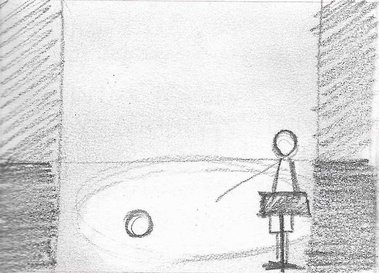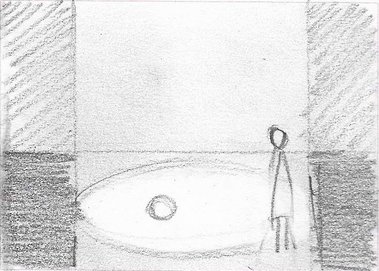Autoscenography: A Project Storyboard
This storyboard - a traditional tool of performance design - frames the genesis of this project. This was made to briskly think through the narrative arc of this PhD project, using a method from my professional practice. It is followed by the abstract for this thesis.
Page 1
Abstract
This practice research project introduces the neologism autoscenography, to identify the place where the lived experience of the scenographer intersects with their practice. Drawing on theories of feminist building, place orientation, and calls for greater agency in the field of ‘expanded’ scenography, autoscenography is proposed as a nourishing, fruitful parallel practice to the prevailing ways one might do the work of scenography. The practice is contextualised by a broad spectrum of references, congruent with a feminist approach to research methodology. The thesis details four practical autoscenographic projects, foregrounding the originating scenographer’s focus on performance space and evidencing different dimensions of the practice. A walking project explores the embodied, felt experience of being a scenographer with landscape. A second project re-stages family photographs, drawing on the family history of the scenographer and making her a part of the picture. Project 3 sees a feminist strategy of ‘breaking-up’ with theatre design enacted through the writing of a ‘Dear John’ letter. A final project explores the time-space potential of autoscenography and the role of the personal in research, through the scattering of a bespoke bookmark in borrowed or second-hand books. Autoscenography emerges as a space to consider the subjectivity of the scenographer in relation to their practice, and points to a range of possible directions for this work from self-reflection, through critical appraisal of the scenographer’s working environments towards new directions for - or an alternative to - professional practice.
Having communicated the narrative arc of this project and summarised its content, the next section will introduce the term autoscenography and nature of this practice.
Page 2
Next →


















